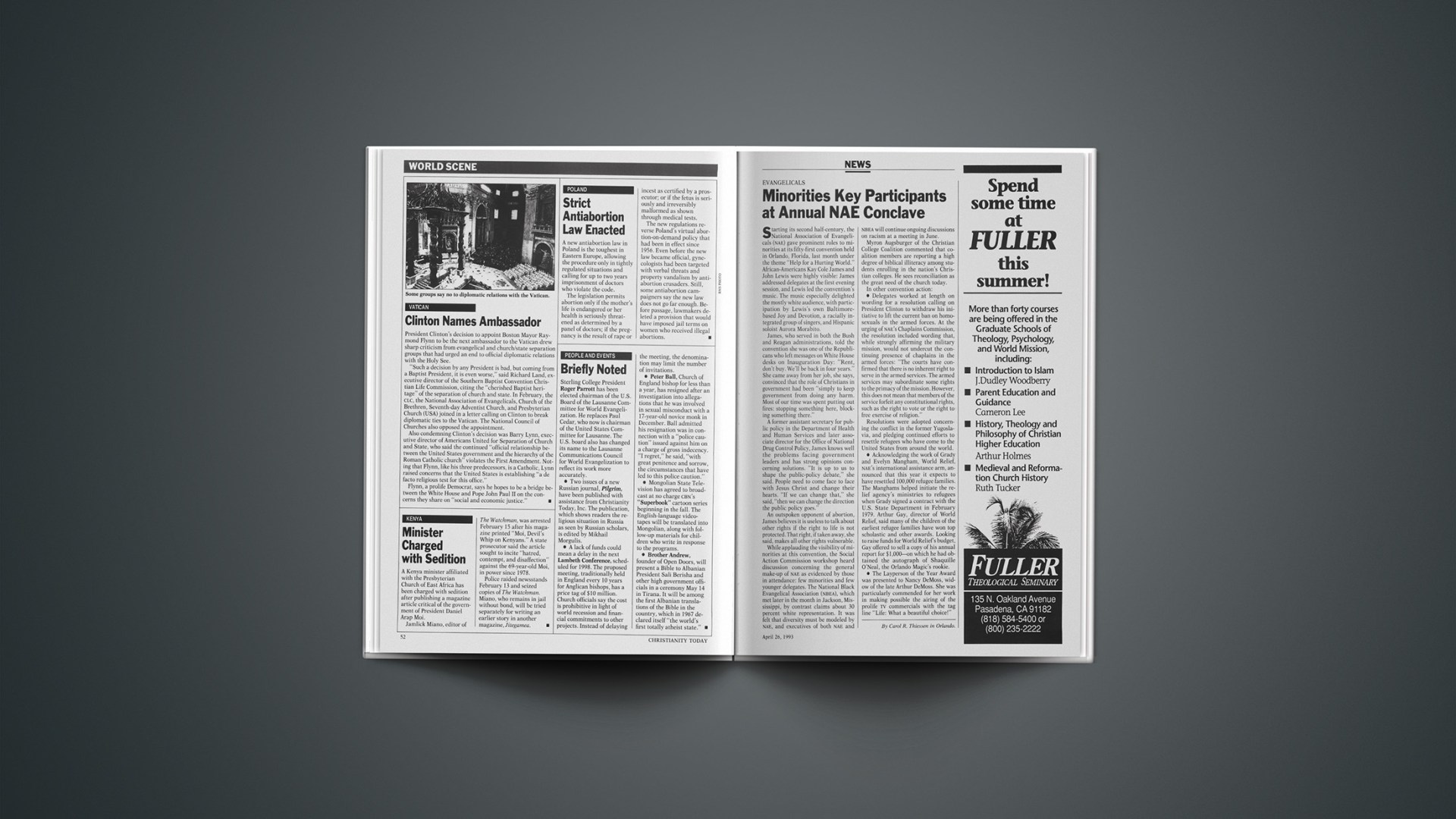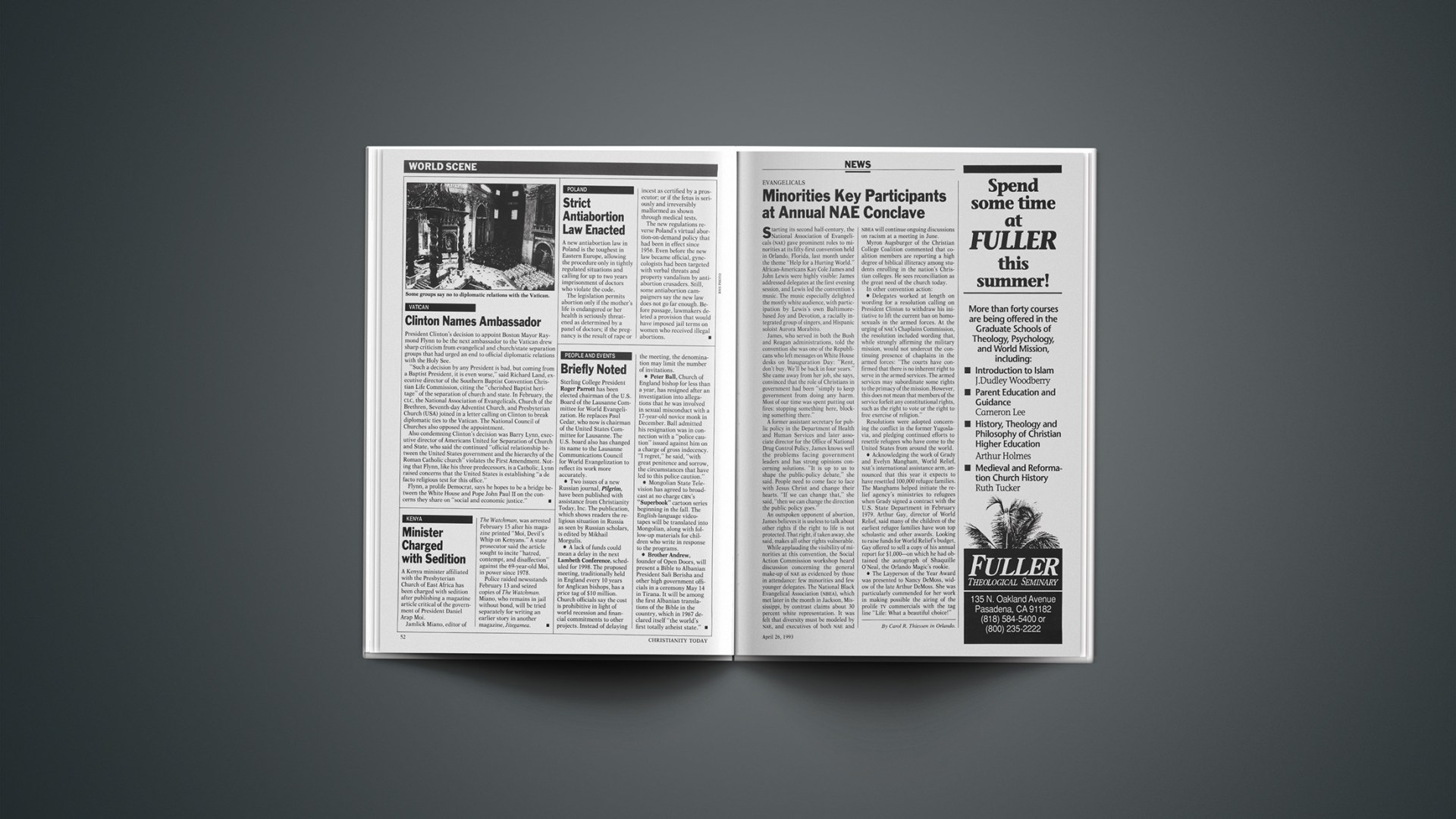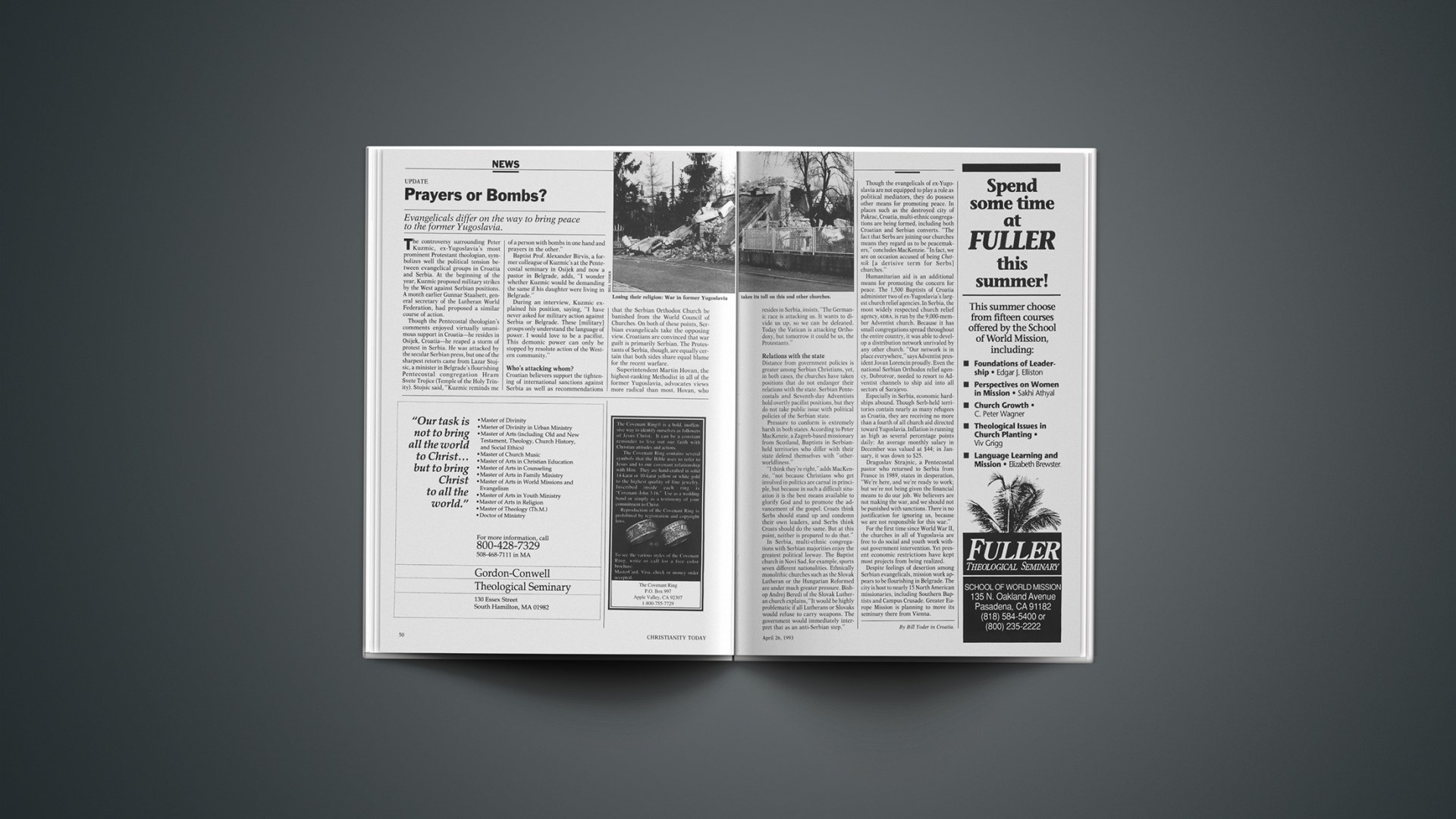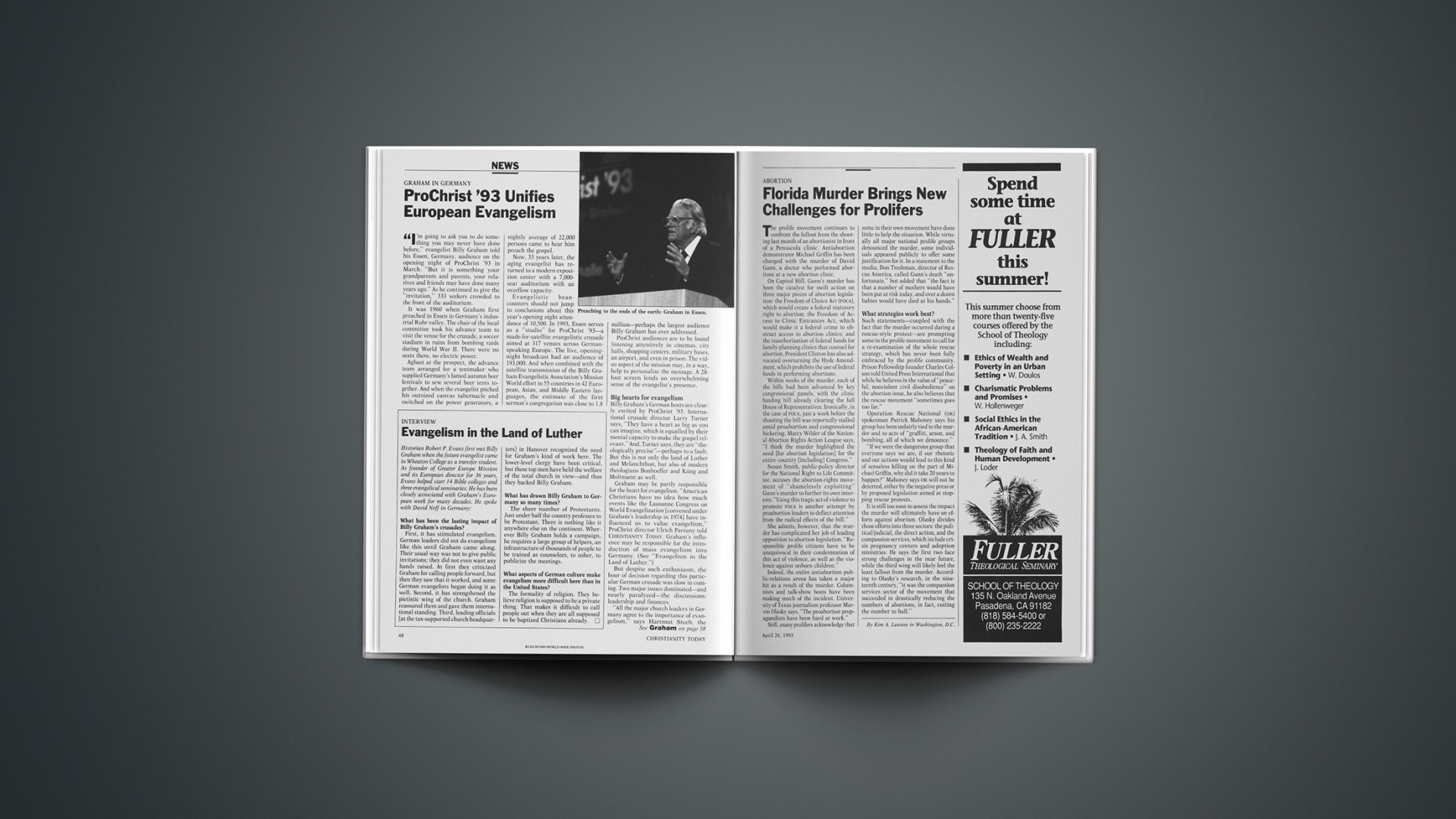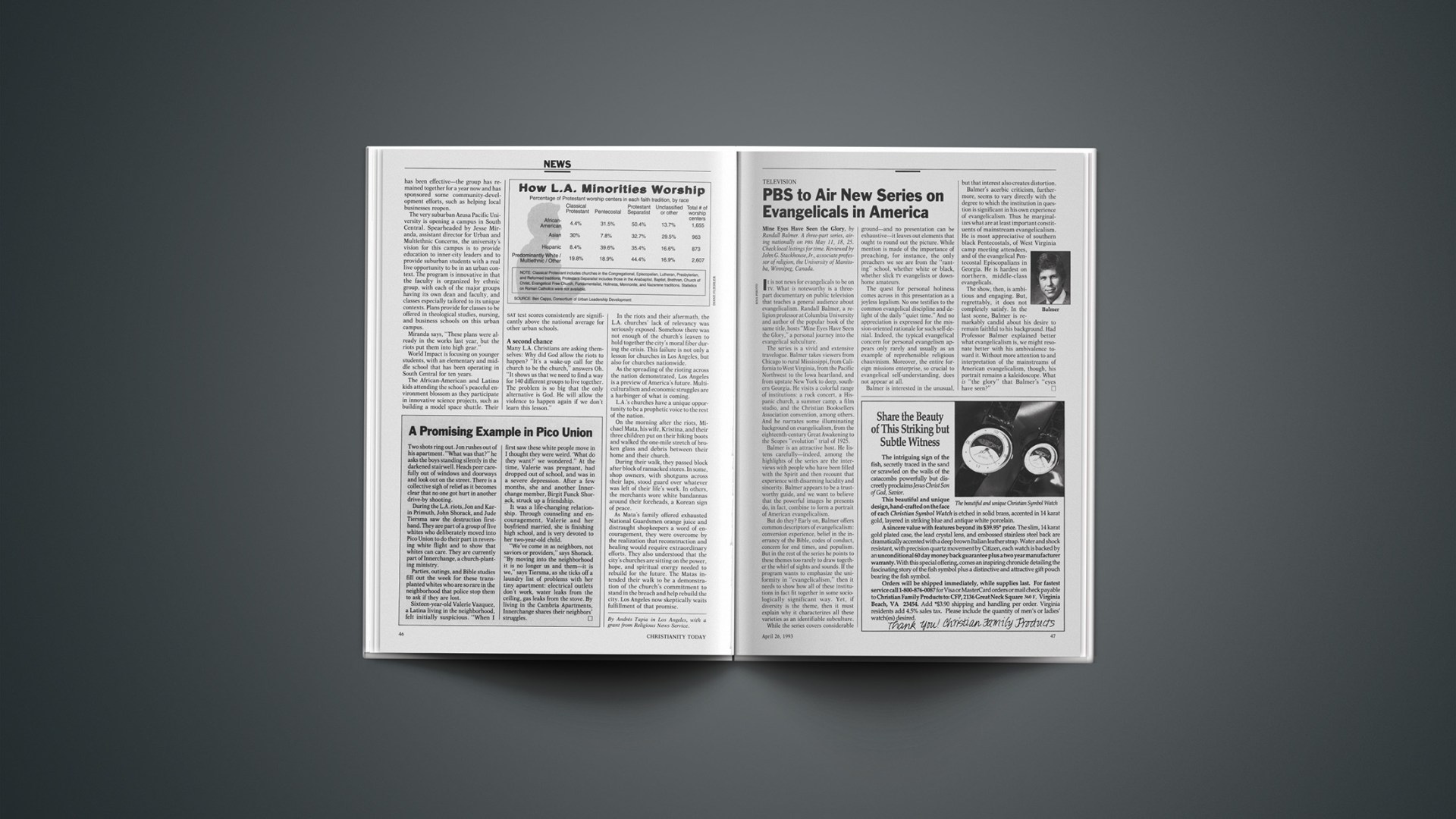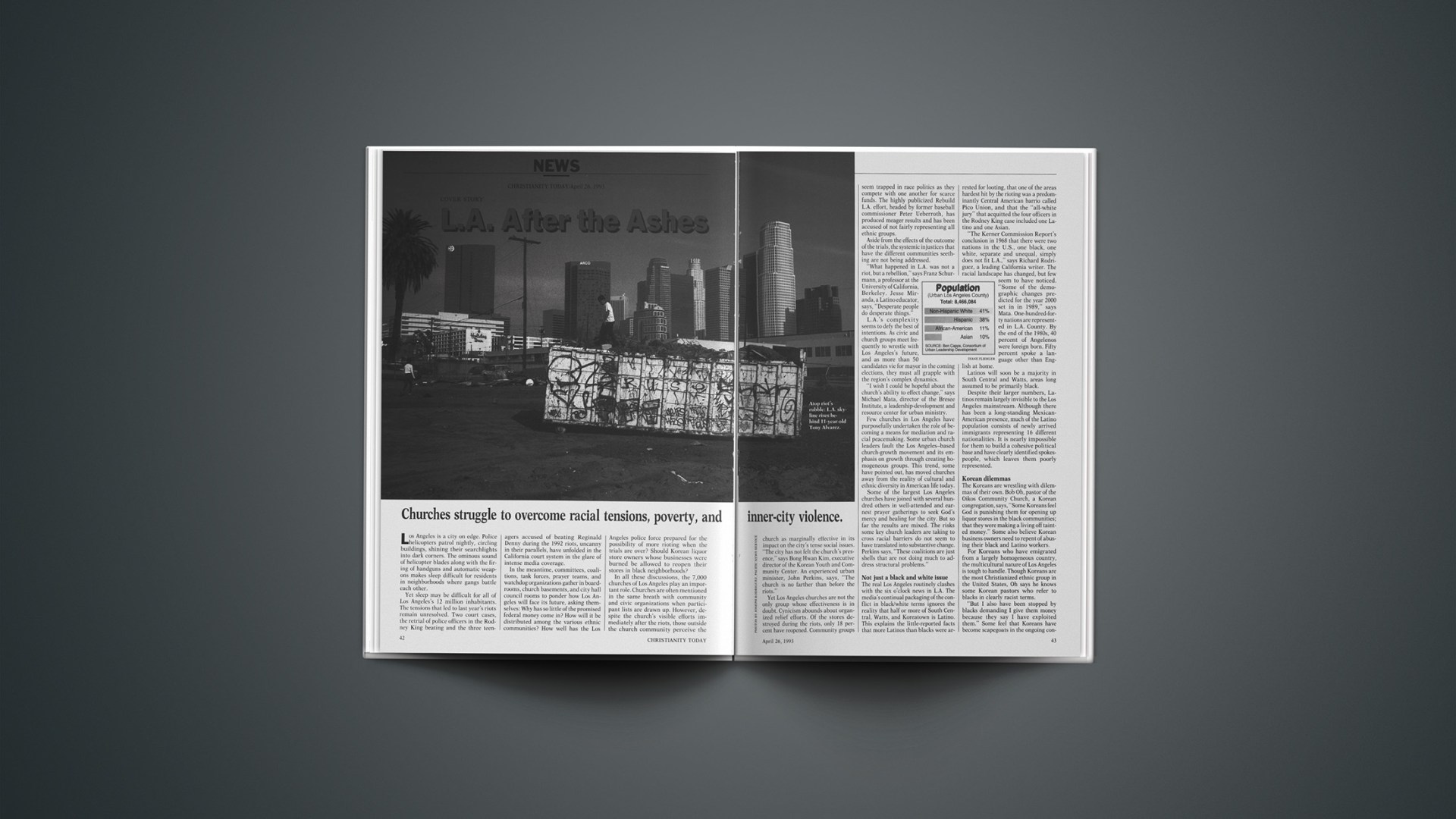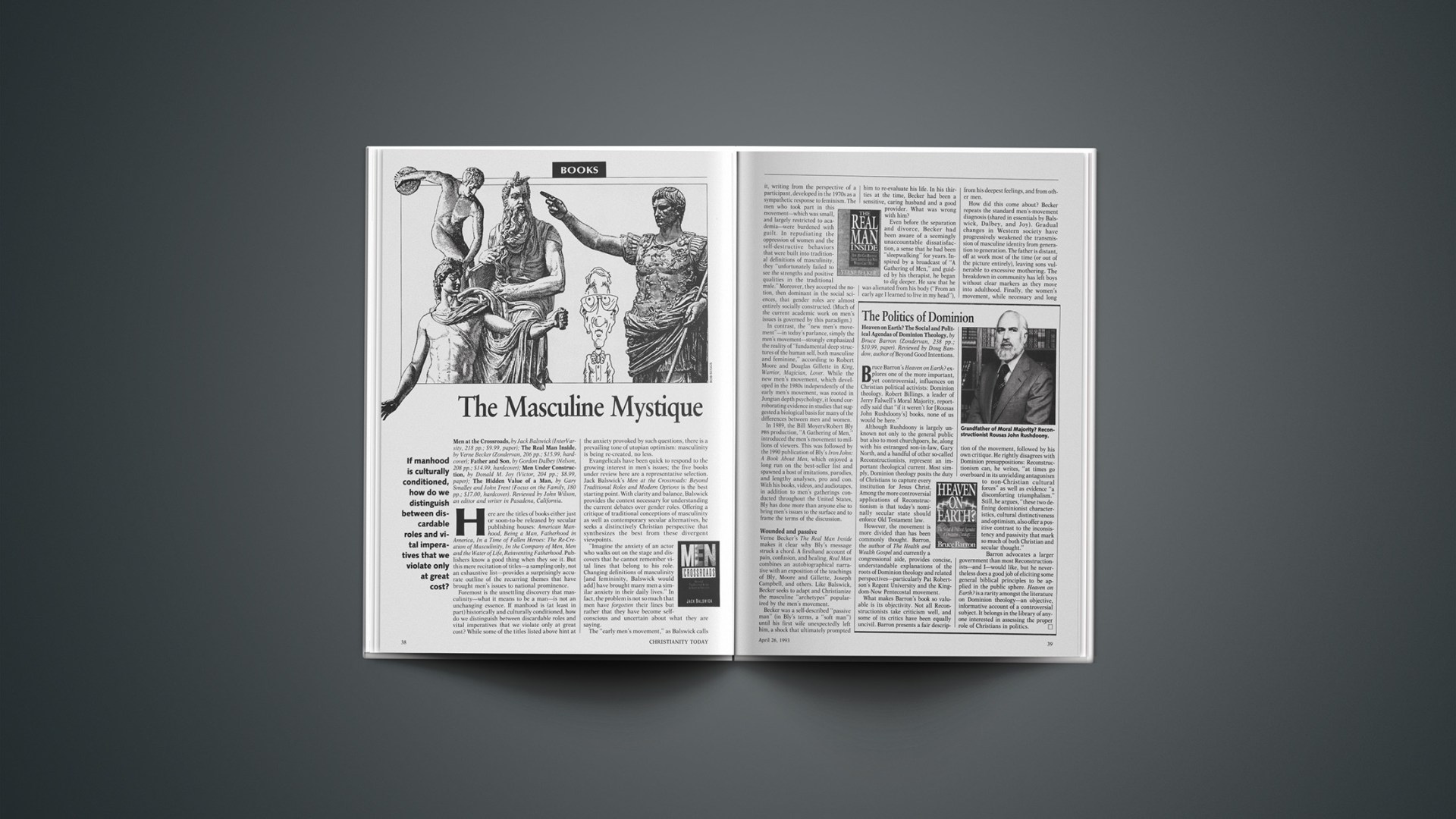Starting its second half-century, the National Association of Evangelicals (NAE) gave prominent roles to minorities at its fifty-first convention held in Orlando, Florida, last month under the theme “Help for a Hurting World.” African-Americans Kay Cole James and John Lewis were highly visible: James addressed delegates at the first evening session, and Lewis led the convention’s music. The music especially delighted the mostly white audience, with participation by Lewis’s own Baltimore-based Joy and Devotion, a racially integrated group of singers, and Hispanic soloist Aurora Morabito.
James, who served in both the Bush and Reagan administrations, told the convention she was one of the Republicans who left messages on White House desks on Inauguration Day: “Rent, don’t buy. We’ll be back in four years.” She came away from her job, she says, convinced that the role of Christians in government had been “simply to keep government from doing any harm. Most of our time was spent putting out fires: stopping something here, blocking something there.”
A former assistant secretary for public policy in the Department of Health and Human Services and later associate director for the Office of National Drug Control Policy, James knows well the problems facing government leaders and has strong opinions concerning solutions. “It is up to us to shape the public-policy debate,” she said. People need to come face to face with Jesus Christ and change their hearts. “If we can change that,” she said, “then we can change the direction the public policy goes.”
An outspoken opponent of abortion, James believes it is useless to talk about other rights if the right to life is not protected. That right, if taken away, she said, makes all other rights vulnerable.
While applauding the visibility of minorities at this convention, the Social Action Commission workshop heard discussion concerning the general make-up of NAE as evidenced by those in attendance: few minorities and few younger delegates. The National Black Evangelical Association (NBEA), which met later in the month in Jackson, Mississippi, by contrast claims about 30 percent white representation. It was felt that diversity must be modeled by NAE, and executives of both NAE and NBEA will continue ongoing discussions on racism at a meeting in June.
Myron Augsburger of the Christian College Coalition commented that coalition members are reporting a high degree of biblical illiteracy among students enrolling in the nation’s Christian colleges. He sees reconciliation as the great need of the church today.
In other convention action:
• Delegates worked at length on wording for a resolution calling on President Clinton to withdraw his initiative to lift the current ban on homosexuals in the armed forces. At the urging of NAE’s Chaplains Commission, the resolution included wording that, while strongly affirming the military mission, would not undercut the continuing presence of chaplains in the armed forces: “The courts have confirmed that there is no inherent right to serve in the armed services. The armed services may subordinate some rights to the primacy of the mission. However, this does not mean that members of the service forfeit any constitutional rights, such as the right to vote or the right to free exercise of religion.”
Resolutions were adopted concerning the conflict in the former Yugoslavia, and pledging continued efforts to resettle refugees who have come to the United States from around the world.
• Acknowledging the work of Grady and Evelyn Mangham, World Relief, NAE’s international assistance arm, announced that this year it expects to have resettled 100,000 refugee families. The Manghams helped initiate the relief agency’s ministries to refugees when Grady signed a contract with the U.S. State Department in February 1979. Arthur Gay, director of World Relief, said many of the children of the earliest refugee families have won top scholastic and other awards. Looking to raise funds for World Relief’s budget, Gay offered to sell a copy of his annual report for $ 1,000—on which he had obtained the autograph of Shaquille O’Neal, the Orlando Magic’s rookie.
• The Layperson of the Year Award was presented to Nancy DeMoss, widow of the late Arthur DeMoss. She was particularly commended for her work in making possible the airing of the prolife TV commercials with the tag line “Life: What a beautiful choice!”
By Carol R. Thiessen in Orlando.

